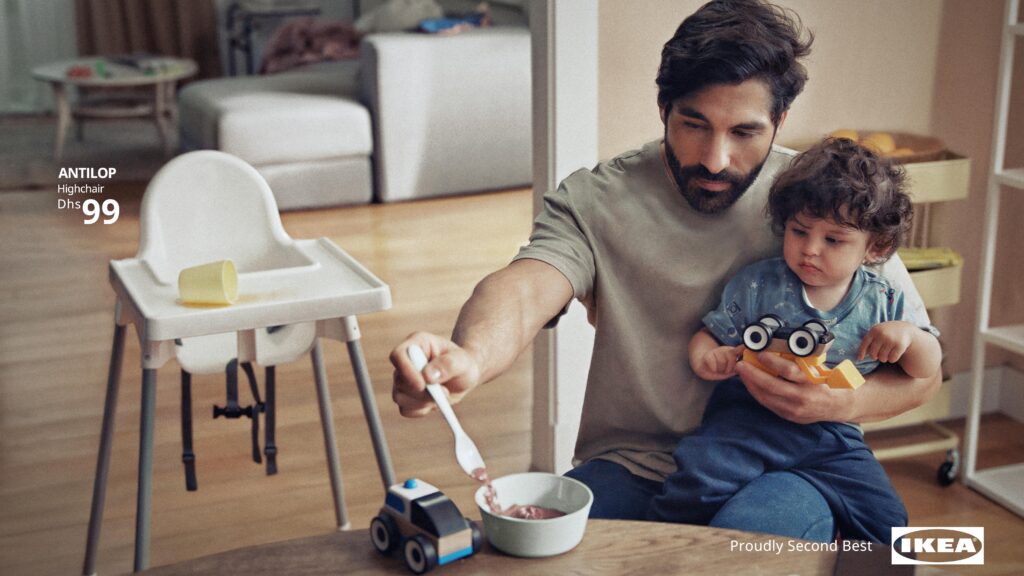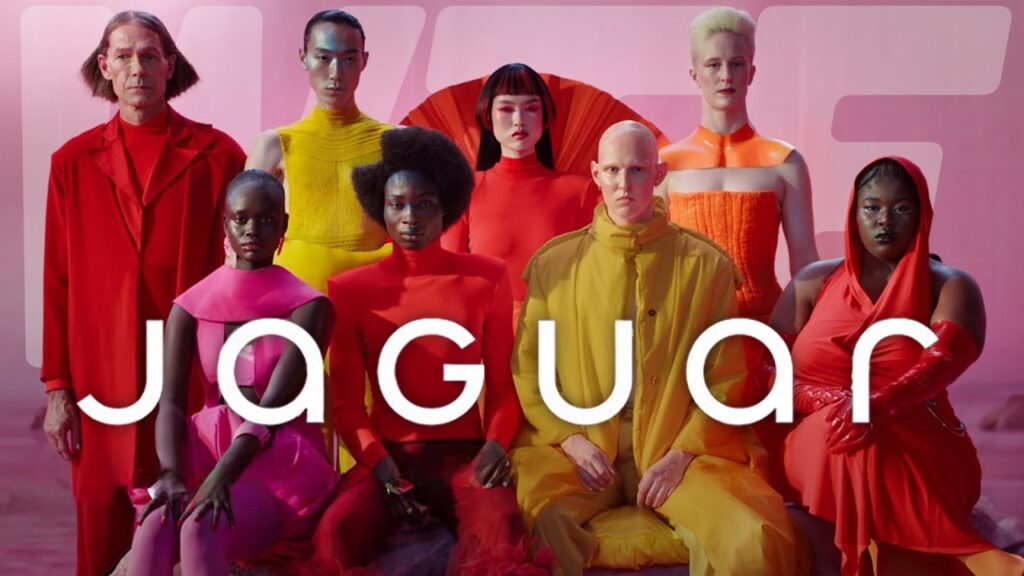Let’s face it, most brands are obsessed with being number one. Top shelf. Industry leader. Best-in-class. That kind of thing. So, when a global furniture giant publicly declares that it’s proudly second best? You stop and take notice.
That’s exactly what IKEA did. And not as a gimmick, but as a masterstroke of emotional storytelling, humility, and brand confidence. The “Proudly Second Best” campaign launched in 2023 across the UAE, Qatar, Egypt, and Oman. Within weeks, it became one of the most talked-about and awarded marketing campaigns in recent years.
It’s rare that a brand message hits the head, heart, and gut all at once. IKEA’s campaign did just that. It wasn’t loud. It wasn’t flashy. It was quietly brilliant.
This is the story of how IKEA made itself smaller to make something bigger: love.
The Big Idea behind being second
At first glance, the premise seems counterintuitive. IKEA, a company that sells baby cots, high chairs, and feeding gear, chose to highlight something that wasn’t their product: the bond between parent and child.
Each ad in the campaign featured IKEA’s baby products quietly sitting in the background, while a child slept on a parent’s chest or was fed directly from a spoon, cradled in arms. The message? No product, no matter how smartly designed, can replace the comfort of a parent’s touch.
“We’re proud to be second best,” the ads proclaimed. Because first place belongs to Mom and Dad.
This campaign was developed by INGO Hamburg and DAVID Madrid and executed by Al-Futtaim IKEA in the Middle East. The creative team leaned into one powerful insight: love doesn’t need a product to exist, but a good product can make the moment a little easier.
They didn’t try to be clever. They chose to be sincere.
And it worked.
Context matters: Why now?
Modern parenting is noisy. Social feeds are flooded with “perfect” nurseries and parenting hacks. Brands often barge in with claims that their product is the answer to every sleep regression or tantrum.
IKEA went the opposite way. Instead of centering the product, they centered real moments, and gently showed how their products fit around them. It felt honest. It felt human. And in a market full of hype, that kind of authenticity cuts through.
More importantly, it tapped into a truth every parent knows: a cot might be ergonomic, but sometimes the only place your baby wants to sleep is on you.
In this cultural moment where everyone’s shouting louder to get attention, IKEA dared to whisper.
And guess what? That whisper carried.

Crafting the message (And why it worked)
A great campaign starts with a great insight. But how you bring it to life is where the magic happens.
The production, led by director Michelle Cassis, was deliberately crafted to feel raw and real. Lighting was natural. The actors weren’t stiff. There were no overproduced nursery shots. Just little moments that looked like they were pulled straight from a new parent’s camera roll.
It was emotional storytelling without sentimentality. Real without being gritty. Intimate without being intrusive.
One standout spot features a baby sleeping peacefully on a father’s chest while the IKEA crib sits untouched nearby. The shot lingers long enough for the viewer to smile. Then the line appears: “Proudly Second Best.”
There’s no sales pitch. No discount. No urgency. No aggressive CTA.
Just truth.
And that truth spoke volumes.
The visual restraint mirrored the emotional restraint. The confidence of a brand that doesn’t need to be the hero to sell a crib.
The impact was immediate
The campaign wasn’t just a creative darling, it delivered real impact.
Within months, the campaign:
- Won Campaign of the Year at the 2024 Ad Age Creativity Awards
- Took top honors in Print/Design/Out-of-Home categories
- Became one of IKEA’s most shared and talked-about campaigns globally
But numbers only tell part of the story.
The deeper impact? Emotional resonance.
Social media lit up with comments from parents who felt seen. There was pride. There was nostalgia. There was respect for a brand that knew when to speak and when to step aside. Many shared their own “second best” moments: late-night feeds, naps on dad’s chest, mashed banana everywhere but the spoon.
IKEA gave them a mirror, not a megaphone.

What I Learned From IKEA’s Bold Move
After 15 years of helping businesses shape their messaging, here’s what stood out to me:
1. Humility in branding is rare and powerful. Admitting that you’re not the most important part of your customer’s life takes guts. But when you do, people trust you more. It doesn’t diminish your value, it enhances your relevance.
2. You don’t always need to shout. This campaign whispered. And that whisper echoed far louder than most screams. It didn’t beg for attention. It earned it.
3. Emotion is the shortcut to memory. We remember how things make us feel. IKEA didn’t try to sell us something, we felt something instead. That’s what sticks. That’s what gets shared.
4. Let the product take the back seat, sometimes literally. By placing their products in the background, IKEA made them feel quietly essential. There when you need them, invisible when you don’t. Not every product needs to be the star of the show to be memorable.
5. When the message is true, people listen. The authenticity here was undeniable. You can’t fake that. People know. And once they trust your voice, they’ll follow you anywhere.
Why this campaign matters to marketers
If you’re in marketing or brand strategy, here’s the real takeaway:
- The strongest brands aren’t always the loudest. They’re the ones who understand their role in their customers’ lives. They know when to lead and when to follow. They know when to shine and when to soften.
- IKEA’s “Proudly Second Best” is a reminder that being the hero of your own ad isn’t always the smartest play. Sometimes, letting your customer be the hero is what earns you their loyalty.
- That mindset shift, from “look at us” to “we see you” is what separates a clever brand from a beloved one.
And honestly? That’s the kind of thinking I wish more brands had.
It’s also a refreshing change of pace in a culture that rewards being the loudest voice in the room.
The bigger picture: Second best is a strategy
What’s fascinating about this campaign is that it reframes the idea of “best.”
In most boardrooms, “second” sounds like failure. But IKEA leaned into it and turned it into a connection.
They said, “We know where we stand. And we’re proud of that.”
That self-awareness gave them authenticity. And that authenticity gave them cut-through. Suddenly, second place wasn’t weak. It was warm. Relatable. Honest.
And if you can make people feel that? You win.
Brands often obsess over positioning—who’s first, who’s next, who’s rising. But sometimes, relevance isn’t about rank. It’s about resonance.
Final Word
The “Proudly Second Best” campaign may have started as a regional effort, but its message landed globally.
In a world full of brands trying to be first, IKEA reminded us that second place, done with grace, humility, and clarity, can actually win.
Because sometimes, the smartest strategy isn’t grabbing the spotlight.
It’s stepping aside so your customer can shine in it.
And when you do that well, there’s nothing second-rate about it.




